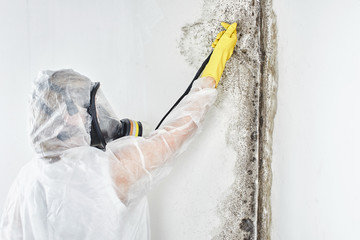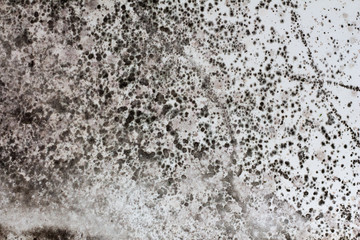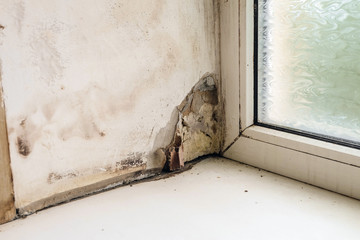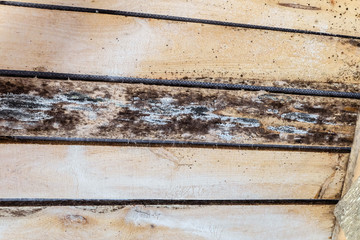Importance Of Mould Testing
Mould Testing & Why You Need It

The whole procedure of identifying the existence of moulds with the assistance of scientific dimensions is called mould testing. This involves carrying out proper tests utilizing specific methods to reach the origin of the mould issue. The importance of mould testing provides feasible evidence to find out the type of mould within a specific location.
General Information
To be in a position to ascertain the existence of mould in a home, warehouse or any other location. Thus, one has to comprehend different kinds of mould testing procedures that are utilized by professional mould inspectors and removalists.
It’s crucial to be aware that through this procedure. Because air attracts moulds and some other particles.
The drawn air only impacts the mould within the slide. A device carrying out the inspection or testing will depend on the number of mould spores and attempt to work out the species which exist. Therefore, it is not normally possible to ascertain the exact number of mould species employing this method.
Workable Atmosphere Testing Method
Further mould testing, provides more information compared to other methods for mould testing and removal. The largest benefit of this process is it lets you differentiate mould species with comparable characteristics and looks. This makes it a great method for comparing which outcomes may occur when a mould count is high in a certain location.
However, this technique also has its drawbacks and it mostly revolves around at a high price. Viable air testing technique is time-consuming and costly.
Surface Sampling Process
As its name implies this testing procedure is generally carried on a substance with a view of ascertaining mould growth and kind of species present. Therefore, its principal focus is on the qualitative results instead of quantitative. The technique is split into sub-categories which may be used for a specific function. These methods include bulk substance, tape elevator, dust sampling and peel sampling.
Surface Sampling Equipment
If it comes to mould testing equipment. It might be of interest to know whether there’s another between the mould testing kits used by professionals and those can be found in the hardware shops. Well, there is a huge gap between the two.
Mould experts rely on unique kits to receive an outcome after an inspection. Mould experts mainly use a calibrated pump which pulls in air and moves it via the petri dish.
However, on DIY kits you need to leave it at the open atmosphere for days to allow air to bring down allergens into the plate. DIY makes it difficult to measure data since the factors can’t be efficiently controlled. This usually means that you often need the assistance of professional mould experts.
It’s crucial to be certain you receive the outcomes when carrying out a mould inspection. This places you in the ideal place to take productive action to cure the issue. For minor instances of mould in a home, you may utilize DIY methods. However, you’re likely to need a mould expert’s help for serious mould infestation.
Black Mould Inspection In Your Property – Importance Of Mould Testing

A black mould inspection isn’t simple to do but it’s of a significant need. Start your mould inspection by assessing all of the possible places moulds may grow.
Take advantage of your nose through your inspection. Should you smell something cold or musky, and there’s not any other reason for those odours. Hence, there’s a chance that mould might be located in the area. Keep looking until you discover the origin of the unusual odours. This could be another indication that a mould problem may exist in the house.
If you find any sort of discolouration or mould on a wall, there can also be mould within the wall. If you notice mould on the rug, there’s a possibility that the mould is also under the carpet or rug pillow. You will want to take your inspection a step further.
Locating Moulds In Your Property
Carpets & Rugs
Should you suspect mould beneath a rug, you’ll have to lift the carpet to find out what’s underneath there. To prevent damaging the carpet, use a set of needle-nose pliers to grasp the carpeting near a corner. Gently lift the carpet slightly and pull on the carpet to the wall. This may remove the carpeting by the tack strip. Upon removing the carpet, you’ll have the ability to roll it back to scrutinize beneath it.
Floorboards
If you notice mould on the floorboards, then you will want to check beneath the ground. Removing and replacing mouldy floorboards is most likely, particularly if there’s a reduction of structural integrity. It can be quite hard to eliminate mould from wood or hardwood surfaces.
If you are not certain if there’s mould beneath the floorboards or interior of wall cavities, then you’ll have to minimize the inspection holes to get a better appearance.
Drywall & Insulation
If you discover drywall or insulation that’s affected by mould, it’s going to need to be removed, bagged, and disposed of.
It’s also advisable to check interior heating and ac ducts, with a flashlight and mirror. If moisture is present within the ducts, then the mould can easily spread across the house and can proceed quickly from room to room throughout the ventilation.
Remember that cutting holes from mouldy substances can create the mould to become airborne. Furthermore, it could be a better idea to have a professional mould expert to conduct an inspection. They are going to provide the work expertise and necessary equipment required not just to stop cross-contamination, but also to find all the mould.
General Information About Blue Mould

Blue mould or bluish-green mould in properties are generally one of two varieties of mould, Penicillium or Aspergillus.
It’s exactly the identical sort of mould where the antibiotic penicillin is created. You will find over 300 distinct species of Penicillium, furthermore, it’s poorly understood by nearly all individuals.
Blue Mould
Blue mould can be found growing on meals, particularly bread and citrus fruits. However, it could also be seen growing on household substances like background, drywall, insulation and carpets, which were damaged by water. In addition, it can be discovered on furnishings which have suffered water damage, such as sofa cushions and mattresses.
Aspergillus
Aspergillus generally grows on decaying leaves and plant. People come in contact with this kind of mould nearly daily. However, this only affects you unless you’ve got a weak immune system or a lung disorder.
The most frequent disorder brought on by Aspergillus is referred to as Aspergillosis. Normally, the individuals most vulnerable to this disorder are individuals having weakened immune systems or the ones that have received chemotherapy treatments. If Aspergillosis gets to your lungs it could quickly spread to your kidneys or brain, getting life-threatening health risks.
Mycotoxins
The colour of a mould isn’t a sign of a particular health threat, but a few species of Penicillium and Aspergillus are known to produce toxic chemicals. These toxic chemicals are known as mycotoxins, which may be detrimental to people and animals alike.
Because of this, all blue or black blue-green moulds is a possible health threat. In case you have any kind of compromised immune system you should avoid things such as mulch piles, decaying vegetation, and stored grain centres, which frequently have mould.
Exposure to Moulds
The simple fact that penicillin is the mould Penicillium does not signify it is beneficial for people to be around Penicillium or Aspergillus.
In case you are having health issues you believe might be due to exposure to mould, then consult with your physician. Your health care provider can perform allergy tests or other evaluations to create a diagnosis and prescribe the proper therapy. To completely recover, however, you will want to eliminate the mould in your house to prevent additional exposure.
Penicillium & Aspergillus
Penicillium and Aspergillus mould spread fast and simple throughout the house so, if you place some blue coloured mould, you ought to look after it as soon as possible. Regrettably, since blue mould spreads so quickly, if you see any in 1 area of their house it is quite probably some is currently growing in different areas of the home, too.
Before you may clean this up, you need to locate it. Since mould often develops in areas where it cannot easily be viewed. Such as interior walls and in heating and ventilation ducts.
We recommend calling professional mould experts to come in and to check your home for mould. Licensed mould specialists may conduct technical tests to find all regions in the house where any kind of mould is growing.
Doing-It-Yourself
You could have the ability to eliminate mould from latching surfaces such as glass, metal, bathtubs, bathrooms, and vinyl flooring with an antimicrobial cleaner. It is usually not possible to eliminate mould from porous surfaces, even however, like wood, drywall, ceiling tiles, insulation, and carpets.
These materials need to be included and subsequently eliminated from the house, taking great care to stop spreading mould to other unaffected regions throughout the elimination procedure. After elimination mould, you must throw any substances that need disposal.
DIY Gears
You need to use an N-95 rated full-face respirator, disposable clothing that covers your head in addition to your sneakers. Furthermore, gloves while cleaning up the mould to protect yourself from inhaling or coming in contact with any microscopic mould spores. If you don’t have access to some full-face respirator, you can put on an N-95 rated dust mask together with goggles to give eye protection. Your neck, nose, and eyes are the simplest areas where mould spores may invade the human body.
DIY Procedures
Many mould removal experts also advise setting up containment on your property, particularly if you’re dealing with a lot of moulds. This may prevent any mould spores which become airborne from propagating to other regions of the house. When the mould elimination is complete you should keep the negative air pressure set up for an extra two days. This is a particularly good idea when dealing with all the moulds because these moulds spread so easily.
Airflow – An Important Part of Mould Removal

The control of air motion, or airflow, even during mould remediation is among the most important and simplest overlooked variables of the mould removal process. Improper removal actions may result in ingestion of harmful levels of mould spores or cross-contamination of unaffected regions of the construction. For heavy mould growth, a qualified professional mould expert ought to be called.
Pre-Testing
Pre-testing may be an important element to set up baselines and to ascertain the amount of cross-contamination brought on by spore migration. In addition, it might consist of a visual inspection and also of surface or air samples.
This will make it possible for the IAQ professional to set within their mould strategy to include or remove areas from the construction from remediation cleaning requirements. Many IAQ specialists will create a range of remediation (following the incremental procedure to be followed closely by the removal experts) based on the information accumulated in the pre-testing. A qualified mould expert will have the best achievement in returning the property to its clean state.
Containment
If the mould origin is observable and the spore migration isn’t extensive, the affected region might only be a small area. This area maybe only a couple of rooms or perhaps the evaluations will determine. Effective containment barriers in addition to using air filtration devices to handle airflow will shield the unaffected regions of the construction.
Therefore, this help in catching any mould spores which are affected during the mould removal procedure. Good containment and handled airflow are crucial in protecting the occupants and unaffected regions of the construction during the remediation procedure.
If the source of the mould is big and the spore migration is more extensive. Using airflow by pressure-control and require appropriate containment. This allows to halt the spore migration and restrict the quantity of spore contamination in regions away from the mould.
Managing Airflow Throughout Mould Removal

The three forms of air pressure here which will handle airflow. Negative Air Pressure, a method in which draining the air from a distance making a negative pressure environment. Positive Air Pressure, a method where the air is led to a distance to positively pressurize the distance and so prevent atmosphere leaking to the distance from different locations. Neutral Air Stress, in which airflow is in a particular area. Thus, normally utilized when the outside air is undesirable or access to outside isn’t sensible.
Hospitals utilize these theories to isolate quarantine regions and protect against cross-contamination, because of infectious diseases. Placing negative air pressure at a distance is comparatively simple in theory. The consequent negative pressure will stop airborne mould spores from travelling beyond the containment.
Why Managing Airflow Important?
The design containment barrier isn’t an airtight seal. Hence, it will just limit the heat, inducing the desired negative pressure scenario.
Positive air pressure could be equally critical in protecting safe regions. Meanwhile, those unsafe regions receive treatment. On occasion, attaining adverse air pressure is not easy. A good illustration could be mould remediation of a loft area which has some venting but there are not any simple means to set up negative pressure. Putting positive air pressure in chambers. In which could vent in the attic will lead to airflow to be led into the loft and vented out. Thus, positive atmospheric pressure is protecting the safe area.
Post Remediation
Testing should comprise not just the regions of the building which were remediated but should incorporate the previously unaffected region.
The outcomes from samples will indicate whether the affected regions of the construction have returned to the wanted condition.
